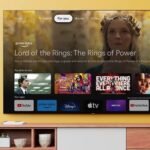For multi-location retailers, showing up in local search results is crucial. It’s where your customers are looking for your services, and you want to be right there.
With millions of customers turning to Google every day to find products and services “near me,” it becomes really important for businesses to optimize their Google My Business (GMB, now known as Google Business Profile, GBP) listings.
However, a GMB listing is just the starting point; to truly stand out, you need to master hyperlocal SEO for multi-location retailers. This approach makes sure each of your stores appears exactly when and where your potential customers are searching.
This blog will break down advanced GMB optimization for multi-location businesses designed specifically for retailers, with insights on how to efficiently manage and scale these strategies across hundreds or even thousands of locations.
Beyond Basic Listings: Advanced GMB Optimization for Multi-Location Retailers
Optimizing a single GMB listing is an easy process. However, for multi-location businesses, each GMB listing must be tailored to its specific location to elevate your brand. Optimizing multiple GMB listings, each tailored to its specific location takes your brand to the next level. Here’s how you can do it:
-
Optimizing GMB for micro-locations within a city
It’s not enough to optimize your GMB just for a city; you need to drill down to the neighborhood or district level. A retail chain across the U.S., for example, shouldn’t just target a city as a whole. Instead, they should optimize for specific neighborhoods like SoHo in New York City, Buckhead in Atlanta, and the Mission District in San Francisco. This practice helps in effective local SEO strategies for retail stores.
-
GMB attributes
GMB allows businesses to add attributes that give users more information at a glance, whether you offer curbside pickup, wheelchair accessibility, or outdoor seating. But attributes go deeper.
For multi-location businesses, attributes can change by location. A suburban branch may offer parking, while a city branch may emphasize its proximity to public transport. This level of detail is part of GMB best practices for retailers.
-
Real-time GMB updates
Business dynamics do change and your GMB listing needs to reflect that. Whether it’s a shift in hours, inventory, or even a temporary closure, keeping consumers updated, is every business’s priority. With SingleInterface, you can include automation and various dynamic capabilities, to drive real-time updates across all locations.
For instance, if a store runs out of stock for a bestselling item, you can update the listing immediately to avoid upsetting customers. This kind of dynamic management keeps customers informed and improves trust, which is key to boosting sales with hyperlocal SEO.
Localized Content Strategies That Work in 2024
To connect effectively with local customers, multi-location retailers need to implement localized content strategies that resonate with their potential consumers.
Writing messages that reflect local culture, events, and trends can not only enhance customer engagement but also drive foot traffic. Here are some effective tactics to consider:
-
Automating local content with personalization
- Localized Blog Posts: Create blog posts tailored to local interests. For example, a retail store in a university area might publish a guide to back-to-school essentials that cater to students.
While another branch in a suburban area might focus on family-oriented products for the festival season. This approach aligns with hyperlocal SEO for multi-location retailers by ensuring content is relevant to specific audiences. - Event-Based Content: Develop content around local events. For instance, a sports store could create a promotional piece highlighting gear for an upcoming marathon in the area, offering discounts to participants.
This not only shows support for the community but also positions the retailer as a go-to destination for local needs. Utilizing local visibility ranking strategies for retail stores can enhance visibility during these key events.
-
Leverage Google posts
- Community Engagement Posts: Use Google Posts to share community news or highlight local partnerships. For instance, a grocery store can post about a collaboration with a nearby farmer’s market, promoting fresh, locally sourced products. This tactic is important in implementing Google My Business tactics for retailers.
- Location-Specific Promotions: Promote unique sales that cater to local preferences. For example, a clothing retailer might run a special discount on winter gear for customers in colder regions while advertising summer apparel in warmer climates.
This strategy exemplifies GMB best practices for retailers and emphasizes the importance of location-based SEO for retail stores.
Advanced schema markup for local SEO
- Tailored Email Newsletters: Segment your email list by location to send customized newsletters. A chain of fitness centers, let’s say, could share workout tips or class schedules that reflect the preferences of each community, like outdoor yoga in the summer for a beachside location versus indoor classes for an urban area. This segmentation helps in boosting sales with hyperlocal SEO.
- Localized Offers: Include exclusive offers based on local events. If a city is hosting a food festival, a restaurant chain could send out emails promoting limited-time menu items inspired by the festival. This tactic reinforces GMB optimization for multi-location businesses by ensuring that marketing efforts align with community events.
Hyperlocal Reviews and Feedback Loops
Customer reviews are more than just ratings. They provide invaluable insights into local preferences and help shape a retailer’s reputation within the community.
Effectively managing and responding to hyperlocal feedback not only enhances customer trust but also drives continuous improvement across all your business locations. This is primarily important for local SEO strategies for retail stores, as positive reviews can significantly boost your search rankings.
-
Localized review solicitation and response
Managing reviews for a number of locations can get overwhelming, but ignoring them isn’t an option. Encourage reviews for each store specifically, as local reviews directly influence location-based SEO for retail stores.
Respond to each review with location-specific responses to show you care. For example, a coffee shop can thank a customer by name and mention a product they purchased, which is an effective way of encouraging customer engagement in Google My Business tactics for retailers.
-
Automated alerts for reviews
Negative reviews can hurt your business, but catching them early allows you to fix the issue quickly. With SingleInterface, your stores can address negative reviews effectively, understand customers better, and transform their overall experience with better satisfaction.
For example, if one branch receives complaints about service, you can address the issue before it snowballs. Prompt responses, with real-time alerts, keep customer satisfaction high while protecting your brand’s reputation and are essential for boosting sales with hyperlocal SEO.
Hyperlocal Ads: Advanced Techniques
As shoppers increasingly rely on smartphones for nearby shopping, hyperlocal ads and campaigns have become essential for multi-location retailers. Through dedicated capabilities from SingleInterface, businesses can use neighborhood-level targeting to engage potential customers in specific areas, creating highly relevant, local advertising that drives foot traffic.
By focusing on ads tailored to particular communities, stores can create meaningful connections and maximize in-store visits.
-
Location-specific Google Ads campaigns
Targeting specific areas with Google Ads is essential for hyperlocal marketing for retail chains. Instead of running one-size-fits-all campaigns, multi-location retailers can target ads down to the neighborhood level.
For instance, a restaurant chain can run Google Ads promoting lunch deals within a 3-mile radius of each branch, applying GMB best practices for retailers to ensure optimal visibility.
-
Hyperlocal Ads on social platforms
Platforms like Facebook and Instagram allow for advanced geotargeting, letting you serve ads to users when they are physically near your stores. A local gym could run a promotion for people within a 2-mile radius, encouraging them to stop by for a free class. This approach is vital for boosting sales with hyperlocal SEO and integrating with broader local SEO strategies for retail stores.
Looking Ahead
Hyperlocal SEO is evolving, with new tools and features rolling out constantly. Voice search and AI-driven local search results are on the rise, and multi-location retailers need to stay ahead of these trends.
Investing in multi-location business SEO tactics today will ensure that your business remains competitive in an increasingly local-driven search environment. With hyper-local marketing software, retailers can automate and optimize their hyperlocal strategies at scale, driving more foot traffic and increasing sales through Google My Business.
Want to take your multi-location business to the next level with hyperlocal SEO and GMB optimization? SingleInterface offers a comprehensive suite of tools that make managing multiple locations simple and effective.
Contact us today for a personalized demo and see how we can help boost your sales through advanced local SEO tactics.








